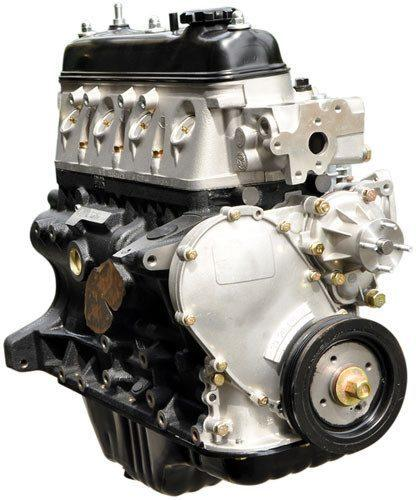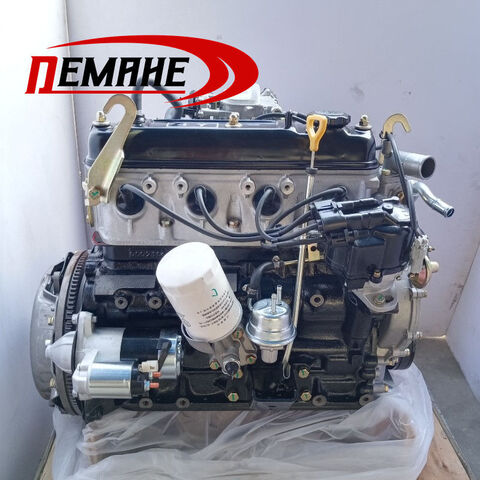Why the Engine Is the Finest Choice for Efficiency and Efficiency in Your Auto
The engine continues to be a critical element in vehicle layout, primarily due to its considerable impact on both efficiency and performance. As advancements in technology enable smaller engines to provide exceptional power while enhancing gas economic climate, the assimilation of attributes such as turbocharging and crossbreed systems comes to be increasingly essential.
Comprehending Engine Kind
Understanding the different types of engines is vital for enhancing performance and effectiveness in vehicle design. The primary engine types include inner burning engines (ICE), electrical engines, and crossbreed systems, each offering unique advantages and limitations.
Internal burning engines, which can be more classified into gasoline and diesel versions, count on the burning of fuel to generate power. Gasoline engines typically provide greater RPMs and much better acceleration, while diesel engines are recognized for their torque and gas effectiveness, making them perfect for heavy-duty applications.
Electric engines, on the various other hand, use electric motors powered by batteries or gas cells. They use instant torque delivery, causing smooth velocity and lower exhausts. The effectiveness of electric engines is dramatically greater than that of ICEs, making them a popular selection for eco-conscious customers.
Hybrid systems incorporate both internal burning and electric engines, leveraging the toughness of both innovations. They optimize gas consumption by utilizing electric power at reduced speeds and changing to gasoline or diesel for greater speeds or much heavier loads.
Selecting the right engine type is essential for accomplishing desired performance metrics and ecological sustainability in contemporary auto engineering.
The Effect of Engine Size
Engine size often plays an essential duty in determining a vehicle's efficiency and performance. Generally measured in liters or cubic centimeters, engine size directly influences the power outcome and torque attributes of a lorry.
Nonetheless, increased engine size frequently correlates with decreased fuel effectiveness. Larger engines take in more fuel, resulting in higher emissions and operational costs. Makers need to balance the need for power with the need for gas economic situation. Smaller sized engines can deliver adequate efficiency for daily driving while promoting better efficiency, making them a preferred selection in mid-size and small cars.
Additionally, innovations in engine style, such as turbocharging and direct gas injection, allow smaller sized engines to achieve power degrees similar to their bigger equivalents. This trend stresses the significance of not solely concentrating on engine size yet likewise considering total car layout and innovation (4y engine). Inevitably, the effect of engine dimension on performance and performance highlights the demand for consumers to analyze their particular driving demands and preferences when choosing a vehicle
Advanced Engine Technologies
Advancements in engine modern technologies have substantially improved the landscape of automotive performance and effectiveness, structure upon the fundamental concepts established by engine size. Significantly, innovations such as turbocharging and direct fuel injection have allowed smaller sized engines to supply power degrees previously connected with larger counterparts. Turbochargers compress air going into the engine, permitting for raised power output without a corresponding increase in engine size, while direct injection enhances fuel shipment, improving burning effectiveness.
Furthermore, variable shutoff timing systems have actually arised as an essential technology, allowing engines to adjust shutoff procedure based upon driving problems. This flexibility enhances both efficiency during acceleration and fuel efficiency during travelling. Crossbreed and electrical engine innovations additionally show the shift in automobile design, combining traditional inner burning engines with electrical motors to maximize efficiency while lowering exhausts.
Moreover, improvements in materials science have actually caused lighter, much more durable engine parts, better improving performance and long life. The combination of advanced electronic devices and engine control systems also allows for real-time changes, making certain optimum performance throughout numerous problems. Collectively, these advanced engine modern technologies not see this only boost automobile performance yet likewise add to a much more sustainable vehicle future, demonstrating the recurring development of engine layout.
Harmonizing Power and Effectiveness
Striking a balance in between power and efficiency is critical in contemporary auto style as suppliers seek to fulfill progressively rigorous emissions laws while satisfying customer need for performance (4y engine). The obstacle hinges on enhancing engine features to provide durable power output without compromising gas economy
To accomplish this equilibrium, engineers utilize numerous strategies, such as turbocharging, which improves engine power by compeling in more air, permitting a smaller sized engine variation that improves fuel performance. Variable shutoff timing technologies likewise play a substantial duty, enabling engines to change their efficiency features based on driving conditions, thus improving both power and performance.
Furthermore, developments in materials and producing methods have actually brought about lighter engine components, which reduce overall car weight and enhance gas effectiveness without endangering power. Crossbreed modern technologies have actually additionally become a viable solution, combining conventional internal combustion engines with electric powertrains to provide a boost in performance while maintaining reduced exhausts.

Future Fads in Engine Layout

In addition, the advancement of innovative materials, such as light-weight composites and high-strength alloys, is established to revolutionize engine parts. These materials not just reduce weight however additionally enhance thermal performance, thus maximizing performance. Furthermore, suppliers are checking out variable compression proportions, allowing engines to adapt to various driving problems, improving both power result and gas economic climate.
Better, the rise of fabricated intelligence and artificial intelligence in engine style is enabling anticipating maintenance and real-time performance optimization. This modern technology can cause engines that self-adjust for maximum performance based upon driving patterns.

Verdict
In verdict, the engine offers as a vital element in accomplishing optimal performance and performance in modern-day automobiles. The interplay between engine dimension and layout proceeds to develop, driving developments that balance electrifying efficiency with environmental sustainability.
Additionally, advancements visit site in engine layout, such as turbocharging and straight fuel shot, enable smaller engines to achieve power degrees similar to their larger equivalents.Developments in engine technologies have actually substantially reshaped the landscape of auto efficiency and efficiency, structure upon the foundational concepts developed by engine size. Turbochargers press air going into the engine, allowing for boosted power output without an equivalent boost in engine dimension, while direct injection enhances fuel shipment, enhancing burning efficiency.
Crossbreed and electric engine modern technologies even more highlight the shift in auto style, incorporating conventional inner combustion engines with electrical motors to take full advantage of performance while decreasing exhausts.
Collectively, these sophisticated engine technologies not only boost vehicle efficiency yet also add to an extra sustainable vehicle future, showing the ongoing development of my response engine layout. (4y engine)